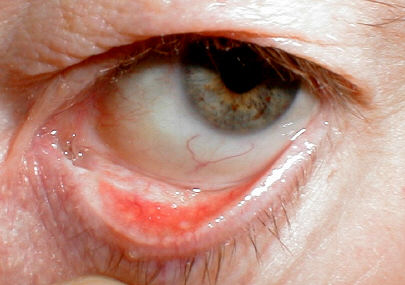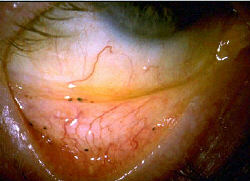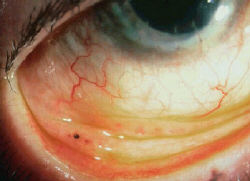A common mistake in the final MRCOphth/MRCS/FRCS is inadequate
examination. This is especially common with slit-lamp examination of the
anterior segment. While pathology of the cornea is common in such examination,
associated or independent lesion(s) may be present in the fornix or tarsal
conjunctiva.
The following cases illustrate the importance of thorough examination;
unless the examiner gives you very specific instruction.

This patient has a Lester-Jones' tube in the caruncle. Unless the
lower lid is everted with the eye abducted, this may be missed.
A Lester-Jones' tube is shown below |
|
aa ... ...
Adrenochrome deposits from chronic use of topical
adrenaline for glaucoma is
another sign which can be easily missed unless
the lower lid is everted. The deposits
most commonly locate in the fornix and the tarsal
conjunctiva. |
|
|
Early signs of ocular cicatricial pemphigoid include obliteration of caruncle,
shortening of the fornix and symblepharon. Without lid eversion, these
signs may be missed. |
|
| Subtarsal fibrosis of the upper lid must be suspected in patients with
corneal scarring or neovascularization. As eversion of the upper lid can
be uncomfortable for the patient, ask the patient's permission to do so.
The examiner may stop you if he thinks this is unnecessary. |
|

...


